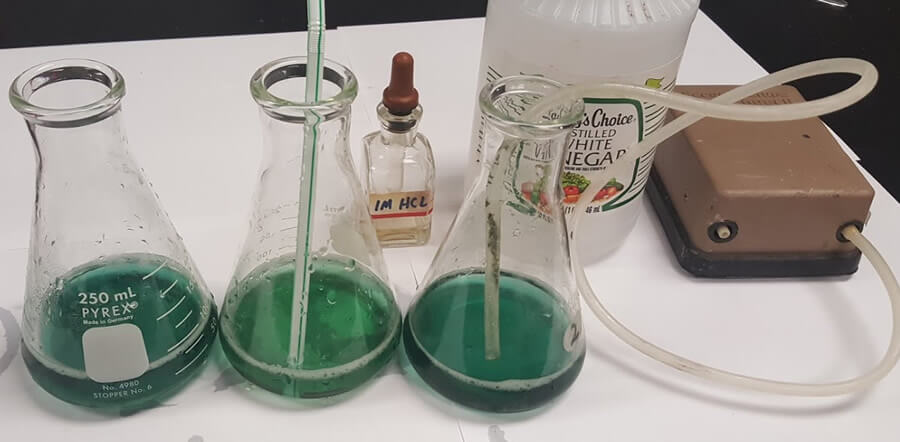Most science classes start with an explanation of what science is and how knowledge is obtained. Though there are many paths in biology to gather and organize knowledge, most textbooks tend to focus on the experimental procedures. This includes a discussion about testable hypotheses, controls and variables.
There are many examples you can share with regard to this sequence, such as a question about how fertilizer may increase the rate of growth in a plant and how you could design an experiment to test this.
Unfortunately, for these early days of classes, there is rarely enough time in the schedule to do a complicated study that incorporates the steps of the scientific method. As a substitute, you can do a simple demonstration using bromothymol blue to show students how the scientific method can be incorporated to determine why the chemical changed color after you blow into it with a straw.

Demonstration set up:
1. I usually dilute the bromothymol blue so that is last longer. ( you may want to play around with this)
2. Show students the chemical and add it to a flask, ask them what color do they see.
3. Put on safety goggles (just good practice) and blow into the flask until the color changes just slightly. Ask students what they observed. Most will say that the color changed. Ask them how they know. It really may be hard to determine there is a color change unless you have a CONTROL.
4. Add BTB to another flask so that you can compare the two to show that there was in fact a color change.
5. Ask students to come up with an explanation for why the color changed. They usually come up with the idea that blowing air into the chemical made it change colors.
6. Ask them how they can know whether it was the air, or perhaps something in the breath.
7. They will probably come up with different ideas, this is where you pull out the aerator that is used in aquariums.
8. Ask them what they think will happen when air is added to a fresh BTB flask. This is the HYPOTHESIS.
9. Turn on the aerator and add to the flask, the BTB will not change colors.
10. Ask students to modify the hypothesis. At this point, they should make a new hypothesis that it is something in the breath, like carbon dioxide.
11. Explain that carbon dioxide is slightly acidic, maybe it’s the acid in the breath that causes the color change.
12. Show them vinegar and/or HCl and explain that these substances are acidic and ask them to make a prediction about what will happen when added to the flask.
13. The demonstration will show that acidic substances will turn BTB yellow (or green).
14. You can even follow up and show them how to change the yellow BTB back to blue by adding a base such as NAOH or baking soda.
15. You can also include a discussion about what an INDICATOR is.

